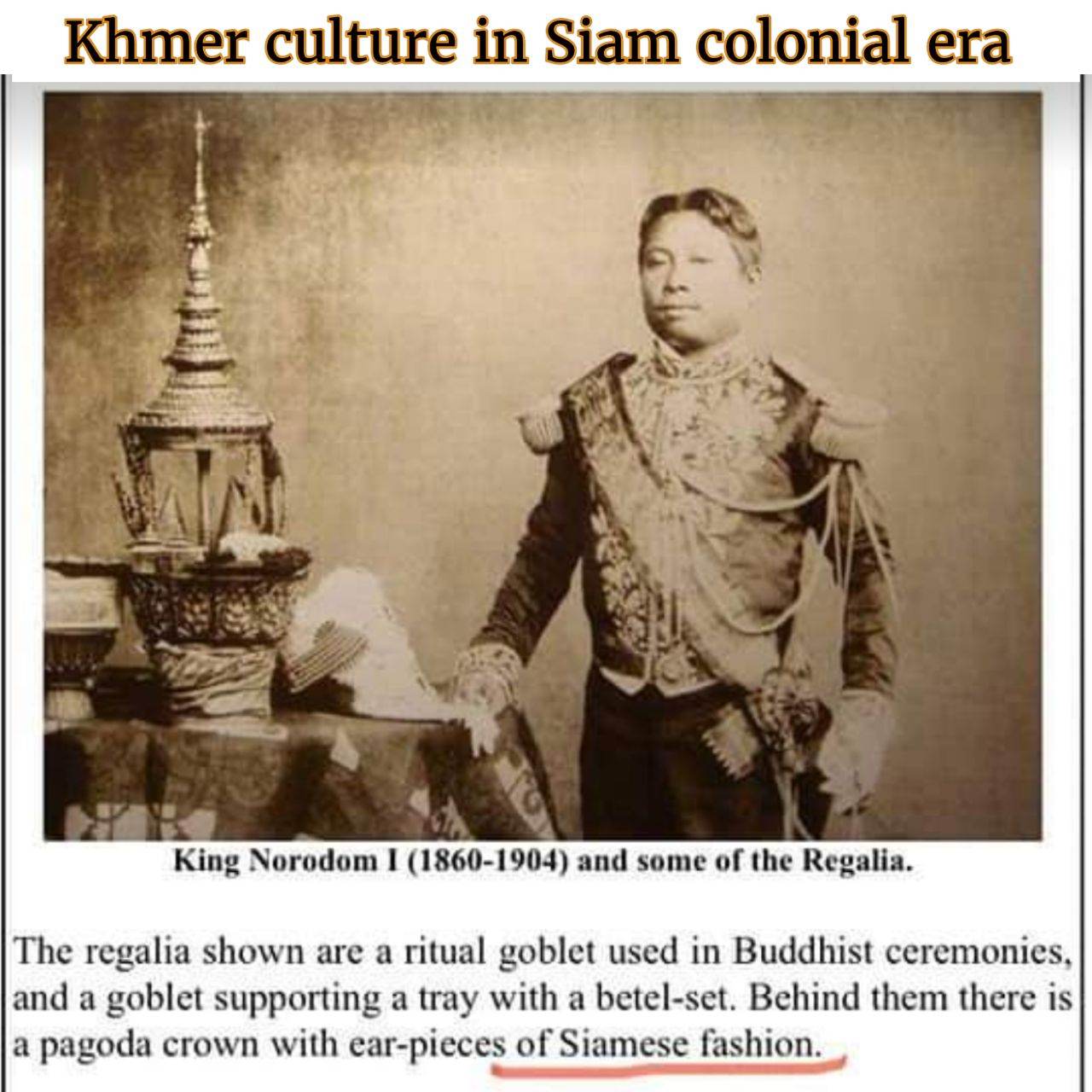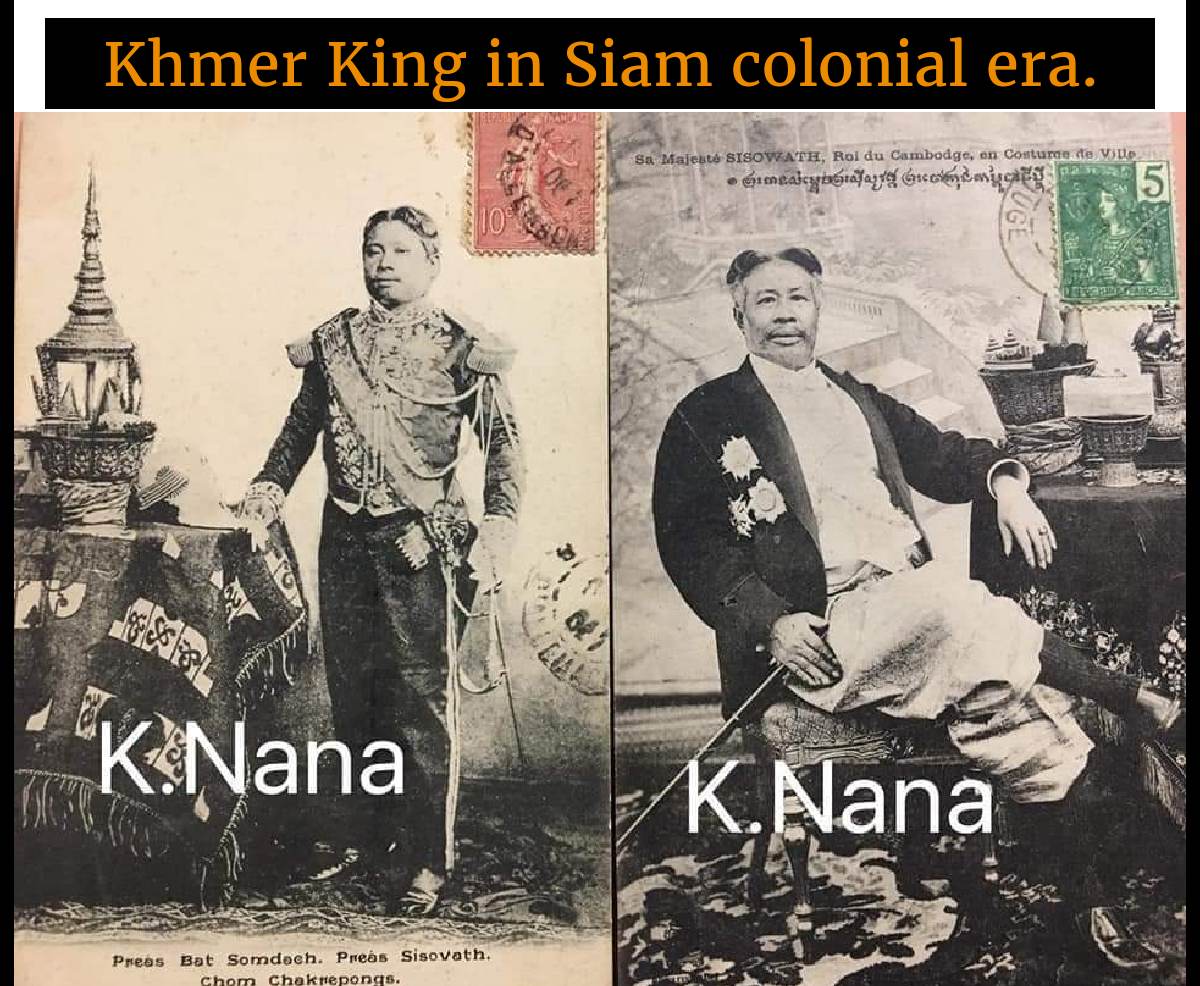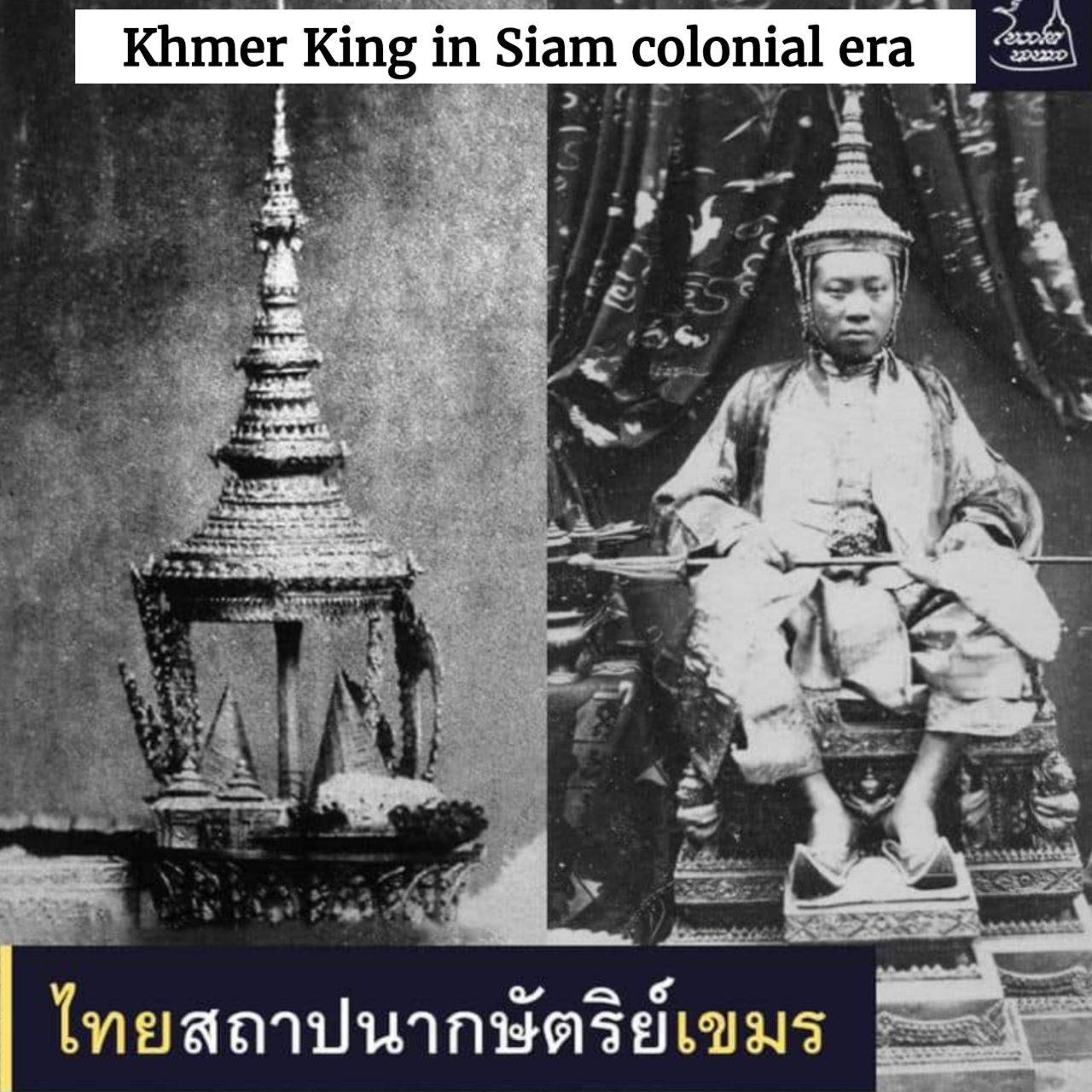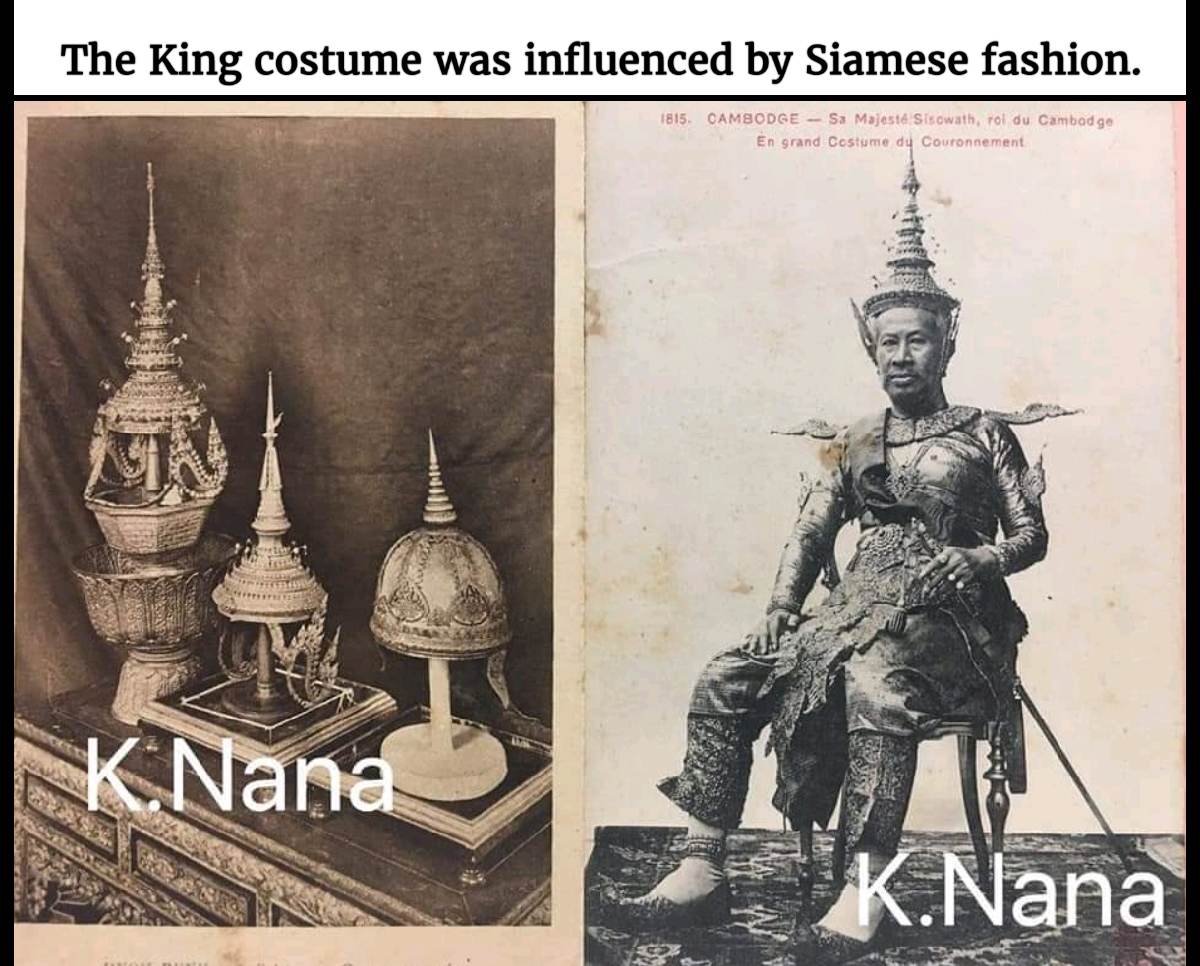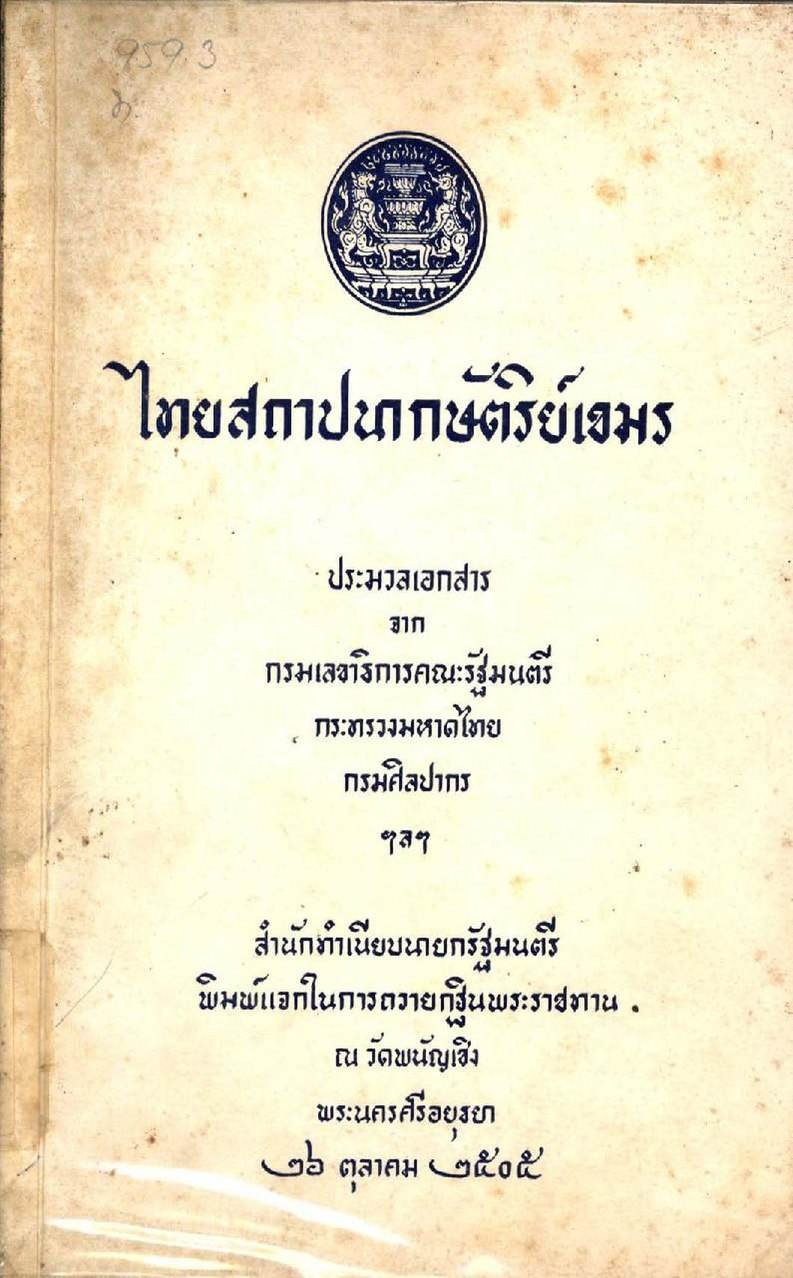Cambodia history in Siam colonial era:Khmer history.
โพสท์โดยIn 1794, after the Khmer became a royal country (cities) of Siam at the beginning of Rattanakosin
This tradition was passed down in the reign of King Rama II and patronized "Nak Duang", the heir from Cambodia. brought to the party in Bangkok as in the reign of King Rama 1
by building a palace to stay and to be ordained at Wat Bowon Until growing up, he established the Duang Ong. to rule the Khmer city. He was named "Somdej Phra Harirakram Maha Isarathibodi", King of Cambodia.
Under the reign of King Ang Duong in the middle of nineteenth century, Cambodia was under the influence of Siamese culture. Although Cambodia was colonized by France in 1863, the royal troupe of the dance still performed Siamese repertoires.
It was not until the cession of the Angkor monuments from Siam in 1907 that Angkor began to play a central role in French colonial discourse. George Groslier's works inter alia were instrumental in historicizing the court dance as a "tradition" handed down from the Angkorean era. Groslier appealed to the colonial authorities for the protection of this "tradition" which had allegedly been on the "decline" owing to the influence of French culture. In the latter half of the 1920s the Résident Supérieur au Cambodge temporarily succeeded in transferring the royal troupe to Groslier's control.
In the 1930s members of the royal family set out to reconstruct the troupe, and the Minister of Palace named Thiounn wrote a book in which he described the court dance as Angkorean "tradition." His book can be considered to be an attempt to appropriate colonial discourse and to construct a new narrative for the Khmers.
After independence in 1953 French colonial discourse on Angkor was incorporated into Cam bodian nationalism. While new repertoires such as Apsara Dance, modeled on the relief of the monuments, were created, the Buddhist Institute in Phnom Penh reprinted Thiounn's book. Though the civil war was prolonged for 20 years and the Pol Pot regime rejected Cambodian cul ture with the exception of the Angkor monuments, French colonial discourse is still alive in Cam bodia today. The dance has not ceased to be presented as "tradition" through the media.



